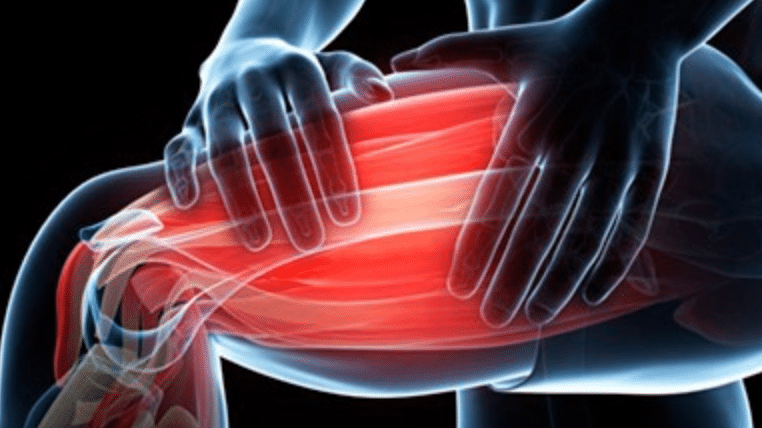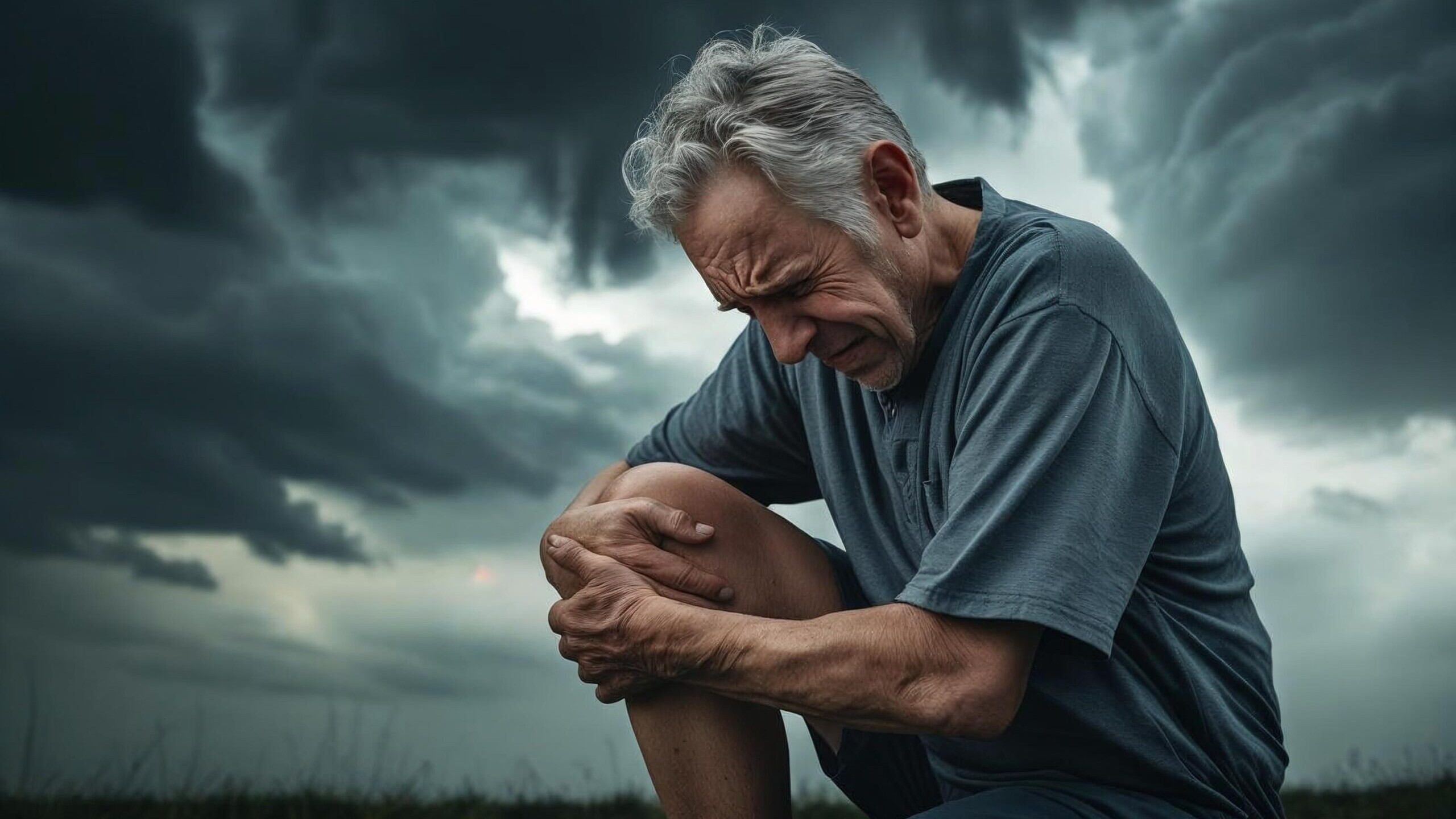
For most of you that play any sort of sport (and actually many of you that have just spontaneously taken part in a little too much activity) you will have certainly experienced DOMS even if you didn’t know what it was! The acronym DOMS stands for Delayed Onset Muscle Soreness and the simple explanation for DOMS is that it is soreness that we experience often days after the actual activity or event we participated in, and classically at its worst on the second day after activity.
The typical time to experience DOMS is after a heavier than usual exercise session. Early in pre-season training is a classic, where the training load exceeds the body’s current fitness capacity. Doing a lot of speed work, or hill running (especially downhill), or completing what we call eccentric exercises, are all common causes of DOMS. Eccentric exercise is when the muscles are lengthening as they are strengthening (eg the lowering component of a squat or deadlift, or running down hills).

The problem with DOMS is you can never tell you’re going to get it whilst you’re training. It’s only the day after, and classically the SECOND day after that you start to wonder what has gone wrong. I love this quote by Dr Tom Brownlee from a recent article in “Science For Sport”:
This silent assassin typically strikes while we’re asleep and it’s when we wake up and hobble out of bed the next day that we feel the full effects!
And that “silent assassin” nearly always comes back and strikes a bit harder on the second night, meaning your day 2 soreness (and occasionally day 3) is actually worse than the day before.
Classically DOMS presents in our quads and our glutes (remember the pain of going downstairs in the days after a big exercise session)? But the hamstrings and calves aren’t far behind. The upper limb isn’t left out either – for anyone who has done a few too many, or too heavy, bicep curls then you may have had a day or two after where you can’t fully straighten your elbows – thank you DOMS!
There is nothing actually wrong with DOMS – in fact if you think of pre season training it is almost necessary at some point in the program because you can’t get fitter and stronger without strategically exceeding the body’s current capacity. It is understanding DOMS and adjusting training programs accordingly that will help avoid an unnecessary injury during this DOMS period.
Possibly the biggest questions we ask ourselves those next few mornings is “Did I do too much”?; and “Have I done any damage”?
In order to get any gains in the body, be it muscle size, speed, endurance, strength etc, we must sensibly (with purpose and not all the time) take our body outside its comfort limit or its capacity with our training method. This is called PROGRESSIVE OVERLOAD and it is the main waymuscle ADAPTATION occurs.
Normally the cells within our muscles are structured in a very organised manner, but after more strenuous training sessions these cells become disorganised and less structured, which our nerve fibres pick up as damage, sending a message back to our brain which duly responds with some pain signals. But it’s not necessarily “damage” in the destructive way we normally think of it – “change” is probably a better term to use than “damage”. None the less, the more “change” there is in these cells, the more the excited nerve signals convey this message to the brain, and the more the brain responds with pain signals to tell us to be careful. If it really was “damage” in the true destructive meaning of the term, a few things would be likely: firstly the pain is going to be pretty much immediate, not days later (unless it is tendon pain which often CAN be much worse the day after exercise, but for now we’re talking muscles); and secondly when true damage does occur the pain doesn’t usually peak at day 2 only to be pretty much completely disappeared by Day 3 or 4.
Another contributor to DOMS is the chemical irritation due to the abundance of hydrogen ions that collect following intense exercise. These hydrogen ions are actually an important factor in stimulating inflammation, and despite what many think, inflammation is not BAD. Inflammation is a critical part of our repair process, we need it to recover and repair – to heal!
So basically the muscular neurons are excited by the disorganised nature of our muscle cells, PLUS the chemical irritation of the hydrogen ions and inflammation, results in the brain responding with a nice message of pain simply to warn us to be careful and to moderate and modify our exercise regime whilst that soreness remains, to allow adaptation and recovery.
The great news is that although DOMS can be extremely painful for a short period, it is actually quite safe to continue exercising when you have DOMS. In fact in many cases some degree of active exercise can be enormously beneficial through this period, albeit it at a lower level of demand. Active exercise not only helps reduce the soreness of DOMS but it also speeds up the general recovery process – so on those terribly sore DOMS dominated days, try and get moving. But remember your session must be light as your DOMS affected muscles won’t have the same high level of output they have when they’re not sore!
So hopefully you can see that DOMS isn’t really a bad thing at all – you haven’t made a bad mistake with your training, you haven’t necessarily overtrained, and there isn’t any “bad” damage in the muscles.
In fact for many people that low level feeling of DOMS creates the sense that you’ve had a great exercise session and pushed yourself. But don’t despair if you don’t experience DOMS after a session – that has no reflection on the benefit and gains from that session. We cannot keep breaking down muscle cells every session, or injury can occur. And the further into a fitness or conditioning program you are, the more likely it is that you won’t get that DOMS soreness with many sessions because your body has adapted and is resilient! So don’t despair if you DO get DOMS, and don’t despair if you DON’T get DOMS!
For the more serious athlete though, much thought is put into sessions where we do want to push the body strategically and therefore pretty much expect some degree of DOMS (yes, we do actually aim for some sessions where soreness is expected) but there’s also sessions where we absolutely aim to get nowhere near an outcome of DOMS and let the body recover – this whole planning process is what we call “periodisation” – making sure the right training sessions happen at the right times!
If your idea is to avoid DOMS, then the best thing to do is build up your program gradually and don’t have any sudden and big increases in distance, speed, hills, weight. If you do get a bout of DOMS, just make sure you adjust your training program to allow for a suitable recovery period until you next push your body hard again.
Anthony Lance
SSPC Physiotherapist
You might like these other resources
Why Do My Joints Ache In Cold Weather?
11 June 2025
The Role of Ice in Managing Acute Sporting Injuries
17 September 2024
Are Your Bones Strong Enough?
28 May 2024





